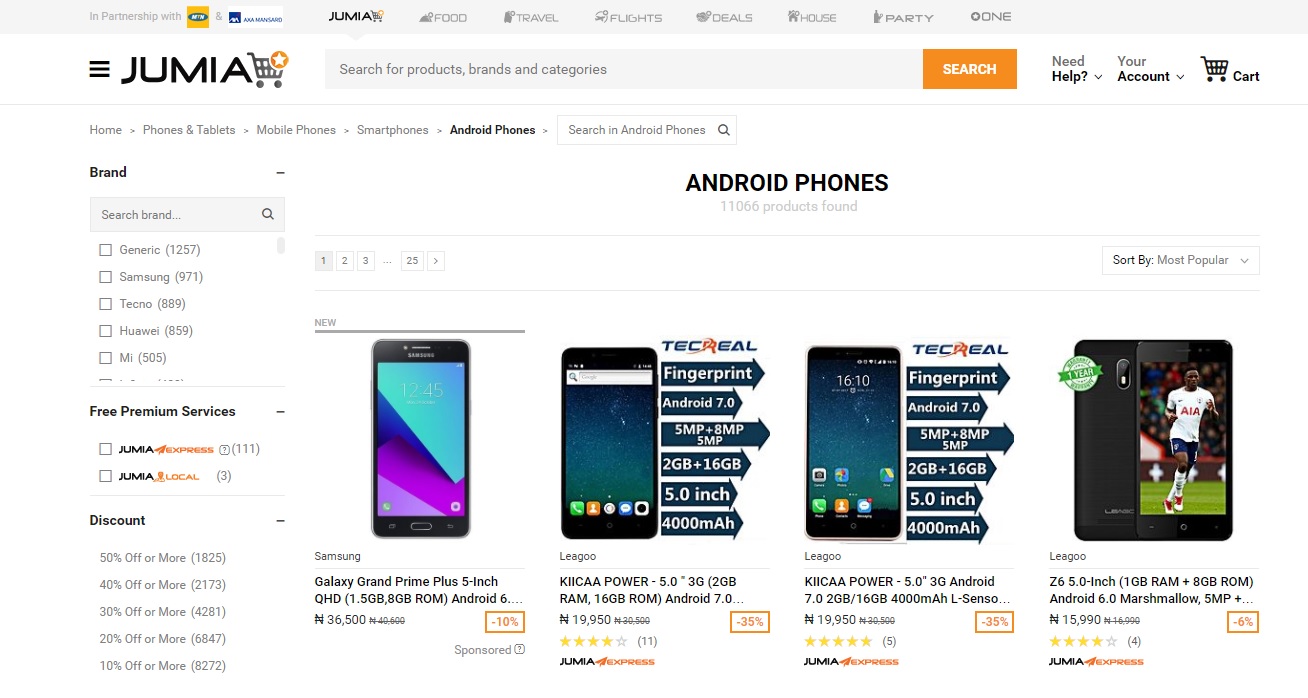Why eCommerce media is considered “native advertising in its best”?

Last week the Native Advertising Institute presented the 2018 Native Advertising Technology Landscape. The sorting of the different sections – Programmatic, DSPs, Social media, eCommerce etc. was probably not done by efficiency as the eCommerce section (which included Amazon advertising, Etsy, Mabaya and few others) was pretty much at the bottom of the page.
One-week earlier CPC strategy published their Amazon shopper behavior study, a report based on interviews with 1,500 respondents, revealing very interesting and important insights on ecommerce native advertising, that are relevant both for advertisers and online retailers.
In this post we will summarize the highlights of the report and add some firsthand information from our experience and from the stores that use our Sponsored Product Ads platform.
I. Shoppers don’t see Sponsored Product Ads as ads.
The CPC strategy study found that 90% of Amazon shoppers either ‘don’t notice ads’ on Amazon or find them ‘useful and relevant’. To be accurate more than 25% of the shoppers consider the ads to be useful and relevant. The other 65% don’t really notice them.
As the guys from CPC said: “If 65% of your customers don’t notice you’re serving them an ad and another 25% of your customers actually like the ads you’re serving up—that’s a winning scenario.”
These findings are aligned to the A/B test results we conducted with several ecommerce sites.
When it comes to sponsored products we found there was no relevance to the fact that some of the products were sponsored and that someone paid to promote them. The sponsored products on each page (if and when they appeared) generated the same average number of clicks as the other products on the page in similar positions.
In some categories, the promoted products results were even better than those of the organic products (in the same position) both in terms of clicks (CTR) and conversions, meaning that a brand that paid to be presented first in its category received the same or even better reaction than a brand that appeared there organically.

II. 75% of the shoppers check other ecommerce sites before buying on Amazon
This is important both for retailers and advertisers.
For retailers because it means that shoppers are looking for alternatives and don’t automatically buy on Amazon. Their store can be that alternative.
For advertisers because it means that when doing Sponsored Product campaigns, they shouldn’t stop at amazon and must take it to the other online stores as well.
And back to retailers, because they can get these Sponsored Product Ads budgets.
III. Shoppers are open to find and try new products and brands
According to the CPC report nearly 80% of the shoppers use Amazon to discover new products or brands.
It means that small brands or new products have a good chance to get purchased if the shoppers get to see them. By running Sponsored Product ads, the small brands and sellers can get their products to appear in relevant search result pages, category pages and product pages and have a good chance of being purchased.
As Stuart Dooley, Marketplace Channel Analyst at CPC Strategy, said: “The lack of large brands in certain verticals allows for smaller brands to flex their might larger than they would be able to in traditional brick and mortars”.
It also means that the big brands shouldn’t be too confident and rely on their brand power – They also must make sure their products get the best positions in the relevant pages.
IV. 70% do Window shopping (which sometimes ends with a purchase).
When asked “How many hours per week do you spend browsing Amazon without a specific product in mind?” the answers of 70% was sometimes or frequently.
Window shopping means that the online stores have a meaningful role in the consumer decision journey – They impact the shoppers not only when they are ready to buy but much earlier.
These findings are aligned with the fact that 97% of visitors to online stores leave without buying anything. So what are they doing there? Window shopping and evaluating! They are visiting these sites during their ZMOT (zero moment of truth) phase.
Online stores play a major part in the ZMOT browsing process and, therefore, advertisers must be there and try to impact the consumers not only when they are in the store to buy, but also when they are visiting the store in their evaluation phase.
“Window shopping” also happens in content sites – According to a research by Outbrain and Opinion Matters a 1/3 of the time we spend reading content online is on items we didn’t set out to find.
These findings also correlate to those of an earlier report on impulse online shopping that was conducted by Hooklogic. That research found that 1 in 3 online purchases, on the average, is the result of impulse shopping.
Impulse shopping, by definition, happens when you browse around and see something you like – Better appearance in the store means a bigger piece of the impulse shopping cake.
VI. Most shoppers don’t go beyond than the 2 first pages
When asked “When you shop on Amazon, how far are you willing to browse beyond the first page of results?” 50% answered that they don’t go beyond the second search result page.
In fact, Amazon’s data shows that 70% of Amazon customers never click past the first page of search results. It also shows that 35% of Amazon shoppers click on the first product featured on a search page, the first three items displayed in search results account for 64% of clicks and 81% of clicks are on brands on the first page of search results.
In a study we published here at Mabaya, we found that 50% of the clicks to product pages were generated from the 1st category result page, 26% were generated from the 2nd page. 12% from the 3rd, 4% from the 4th and 2% from the 5th. We called it the Moore’s law of e-commerce.
We also found that being first is more effective for non-brands – For non-brands or new products, the numbers of clicks on each page was three times higher than the number of clicks on the following page. (higher than the average 2 times).
There are several reasons for why shoppers don’t bother going further than the 2 first pages. One of them is called The Paradox of Choice – The digital stores have unlimited space to offer unlimited diversity that a shopper can’t really handle.
As Barry Schwartz, author of “The Paradox of Choice” says: “The digital generation is picking, and not choosing…with a world of choices rushing by like a music video all a picker can do is grab this or that and hope for the best.”
The shoppers trust the online store to offer the most relevant and good products in the first search results or category page and therefor if they don’t find what they want there they just modify their search or go elsewhere.
These findings emphasize the importance of appearing on the 1st page, especially when it comes to non-brands.
The bottom line – Action items
Online advertisers:
- Increase eCommerce media budget.
- Spend eCommerce media budget on several sites!
Online retailers and marketplaces:
- Offer sellers and brand partners to run Sponsored Product Ads in your store.
- Make sure you are using a platform that does these 3 things: (1) Helps your shoppers find and buy what they want, (2) Helps your brand partners and seller sell more and increase their appearance for a good ROI and (3) Optimizes your incremental revenues from selling Sponsored Product Ads on your site.
Oh yes, thanks for asking, this is exactly what we are offering.

